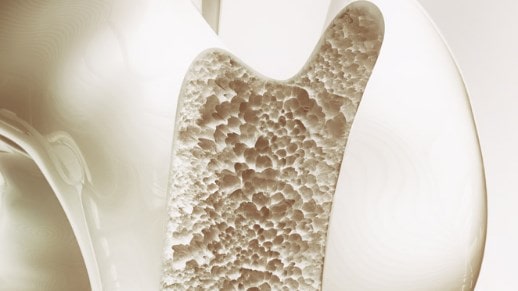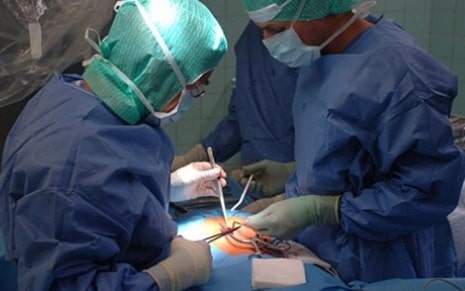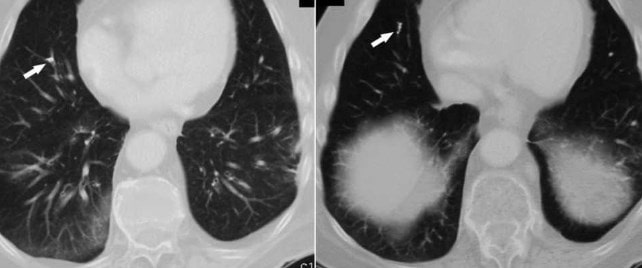
Vertebroplasty is a surgical procedureúrgicus míminimally invasive where veins are restoredéindividual vertebrae. This is a safe treatment under local anesthesia, to treat vertebral fractures, stabilizing the affected bone and significantly reducing pain.
onceóThe main reason for the use of vertebroplasty may be the osteoporosis or malignant tumors. With this interventionónot effective, the vertebral bodies broken and collapsed by the cement óseo are rebuilt and strengthened.
This procedure is done under Scanneríto computerized or fluorosc controlópico and has currently had éxito en paíbe like Spainña, France and the United States. The 90% of the treatments have shown a reductionósignificant pain immediately afterés of the interventionónot over time.
In this artíass we will give you informationón about this new méall interventionist for the reductionón and stabilizationóNo pain in vertebral fractures, a través de the applicationón percutácement net óseo. we will talk to you tooéNo of the procedure, get readyón, possible risks, recover usóno and care.
Index
¿CuáWhen is it convenient to perform a vertebroplasty??
If the individual vertebral bodies have already deteriorated due to the osteoporosis the other affectionsón and you feel severe back pain that shows no tendency to improve, even with analgéadditional physicals and physiotherapy, vertebroplasty can provide relief in many cases.

Vertebroplasty, for instance, cannot be performed if the changes in the vertebral body are too extensive or if they have existed for más from two toños, if there is an infectionón bacteriana grave, if there are known allergies to cement óbone or if there is a high bleeding tendency.
It is méeverything is the más suitable for patients with fresh vertebral fractures and moderate to severe pain Fractures máIt's old tooéare not treated, but vertebroplasty shows the best results if is done within año from the fracture.
Vertebral fractures cróunique ones that cause pain for months orñthe tambiéhave not been treated with good results. Nevertheless, the méNot everything is right for the treatment of severe pain.óunique in the case of a herniated disc O osteoarthritis.
Spaghettién is used every time más in the therapy of the cáncer para withástasis in the ávertebral body area. The presence of a malignant tumor causes dañor severe and instability of the vertebral bodies. This can be improved by vertebroplasty..
Prepare usón
This interventionón es irreversible. Therefore, the méphysician and patient must carefully decide on vertebroplasty. Before performing the operationón, the patient has a diagnosisóclear stico. This includes a comprehensive family history survey with the specialist.

Además, there's a exam físico and an anáblood lysis at the laboratory, who can provide informationóno about diseases. Results show early indications of underlying disease or if inflammation is present.ón potential in the body that causes pain.
Only then the méI say comes to the patient to a radiólogo that uses an im procedureágenes to give a diagnosisófinal stico. the imágenes of X-rays, así as the ScanneríCT or MRIética Eastán available as méall picture before vertebroplasty.
The médico can now see and accurately locateón the disease causing the complaints in the imágenes taken. This allows the vertebral body affected to be named. Since vertebroplasty can be performed under local anesthesia, no preparation is necessaryóNo extra for general anesthesia.
surgical procedureúrgic

For this procedure, the surgeon using local anesthesia, partial or general anesthesia, little agoñthe incisions in the skin to reach the véaffected vertebra. A travéI know about this, insert a hollow and thin needle, with which to inject the cement óseo.
this cement óseo is from hardening ráI ask (polymethyl methacrylate, PMMA). When the cement hardens, temperatures arise that actúeven on local nerve fibers with additional pain relief.
The hollow needle used must have a diameterárelatively large meter for the cement óseo can be injected directly into the véaffected vertebra high takenón. the cement óseo tooén is relatively thin. This ensures that it is evenly distributed around all the fragments of the vértebra frágil.
La operationón is performed in positionón prone. At véAffected vertebra is precisely locatedón with the help of an X-ray device. afterés to remove the hollow needle and restore the puncture siteón, the patient can lie on his back immediately.
Possible risks
Vertebroplasty is a low risk procedure. Complications are rare, but they should be discussed with your méI say in advance because, as with all interventionsétips, possible risks depend on the patient. For instance, there is an increased risk of complications with spinal tumors or other serious diseases.
When vertebroplasty is performed in the áthor column areaácat, the lungs can be accidentally injured in rare cases. The reactions toérgicas tambiéthey are not very rare. Además, spaghettiéthere is no risk ofñor to the nervous tract during an interventionón in the spine. Nevertheless, vertebroplasty is míminimally invasive.
the surgeryíto stabilize the broken vertebral body, but it doesn't cure. Therefore, there is a high risk that neighboring vertebral bodies will alsoédo not collapse in the future. In vertebroplasty the complications náfrequent s may be due to injectionón of the cement, some of them are:
- asymptomatic leaksácement sticks óseo during injectionón in the venous system in más of the 60% of the cases.
- smallñthe amounts of cement óseo go through the véaffected vertebra and remain in the surrounding tissue, causing irritationón in the méspinal game.
- If absorbed, waste tooéThey can enter the lungs throughés of the blood streamíneo. Allí, the cement ódelayed seo can cause pulmonary embolism.
- Paraplejia due to cement óbone in the spinal canal and, Thus, possibly intervenedón needed in the cervical spine or thorácat.
- change in conditionsátics of the entire spine by cementación. This can result in an increased risk of compensatory fracture in the surrounding untreated vertebral bodies..

Retrieve usóno and care
The patient must remain in bed rest afterés of the treatment, at least during the hardening time of the cement (usually about an hour). If I know themísymptoms appear again due to further collapse of the vertebral body, it is possible to repeat the vertebroplasty afterés from another exam.
The procedures described above are generally carried out in the short term. This means that afterés of the interventionón, only a short stay is necessaryíto in the hospital of a few días. During this time, They start intensive physical therapy exercises.
In this way, pharmacotherapy and physiotherapy play an important role. Both help to relieve the síntomas. At the same time, the physiotherapy build the múmuscles of the spine and large muscle groups of the back.
At the same time, the Mústrengthened muscles protect the back and can relieve the spine. This not only puts less weight on the intervertebral discs, but alsoén in the vertebral bodies themselves.

drug treatmentócontinuous logic afterés of the surgeryía is particularly important. The drug primarily interferes with calcium metabolism, who performsñto an essential role in the growth and decompositionóno of bones.
